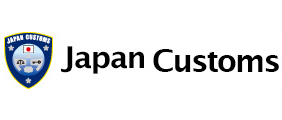1404: Alternative Methods to Determine the Customs Value of Imported Goods
- When the primary method cannot be used Since the primary method cannot be used in the following cases, alternative methods will apply to determine the Customs value of the imported goods.
| (1) | When there are any special circumstances with respect to the import transaction as follows:
|
| (2) | When the goods being valued are not imported by import transactions “Import transaction” is defined as a sale made by the buyer, either individual or corporate body, who has its domicile, residence, principal office, branch office, other offices, place of business or other equivalent places in Japan with the seller in order to have goods arrived in Japan. Therefore, the following goods are considered not to be imported by import transactions.
|
| (3) | When the doubts about the Customs value have not been resolved The case where the further explanation and information from the importer do not resolve the doubts about the documents provided to calculate the Customs value of the imported goods, and the case where the price actually paid by the buyer to or for the benefit of the seller cannot be confirmed as the further explanation and information are not presented, are the examples of this category. |
(Paragraph 2, Article 4 of the Customs Tariff Law, Section 4-1.2 of the Administrative guideline for the Customs Tariff Law)
- Alternative methods If the primary method cannot be used, one of the following alternative methods will be used to determine the Customs value.
| (1) | Identical or similar goods value method If the transaction value of identical or similar goods exported from the same country of production to Japan at or about the same time of importation is found, the Customs value of the imported goods shall be determined based on the said value. In applying this method, the necessary adjustments shall be made to take into account of differences in commercial level, quantity, distances and modes of transport between the imported goods and the identical or similar goods in question. | ||||
| (2) | Deductive value or computed value method If the Customs value of the imported goods cannot be determined under the method (1) above, the Customs value shall be determined under the either of the followings.
| ||||
| (3) | Fall-back value method If the Customs value of the imported goods still cannot be determined under the method of (1) or (2), the Customs value shall be determined using reasonable means of the primary method or alternative methods with flexible interpretation of each requirement. |
(Article 4-2 to 4-4 of the Customs Tariff Law, Article 1-12 of the Cabinet Order for Enforcement of Customs Tariff Law)
Please refer to the following URL for details on customs valuation:
http://www.customs.go.jp/zeikan/seido/hyoka.htm
For consultations on customs procedures, please contact the nearest Customs Counselor.
Please see No. 9301 for inquiries.

